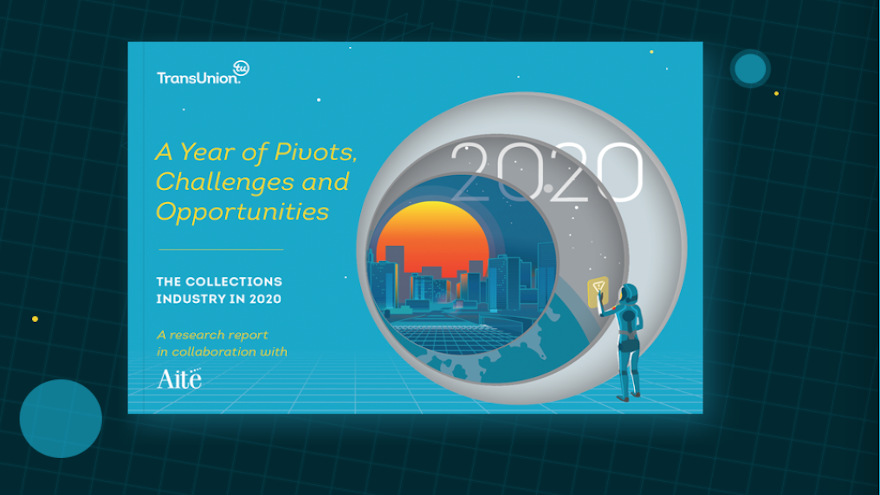Reflecting on ‘pivots, challenges and opportunities’ within collections

Screenshot courtesy of TransUnion.
By subscribing, you agree to receive communications from Auto Remarketing and our partners in accordance with our Privacy Policy. We may share your information with select partners and sponsors who may contact you about their products and services. You may unsubscribe at any time.
CHICAGO –
A new report by TransUnion and Aite Group examined the entire collections world, highlighting that outstanding balances in all credit segments declined by more than $8 billion from the end of 2019 to the midpoint of 2020.
And experts see more changes on the horizon, especially when considering how the pandemic pushed industry consolidation.
The report titled, “A Year of Pivots, Challenges, and Opportunities: The Collections Industry in 2020,” explored how the COVID-19 pandemic has impacted the collections industry and what may be in store for 2021.
Report authors explained the pandemic played a major role in disrupting the consumer credit landscape in 2020. From a collections standpoint, TransUnion and Aite Group acknowledged the industry has been particularly impacted by the decline in overall credit accounts as well as the first drop in household debt levels since 2014.
Experts also mentioned accommodation programs also have delayed some accounts that would have otherwise gone delinquent from defaulting. As a result, they said collections activity has been much more muted, evidenced by the substantial decline in overall balances.
“Consolidation in the collections industry has taken place for the better part of the last decade, and the COVID-19 pandemic helped accelerate that trend. Less credit activity, smaller balances and a large number of accounts in accommodation status certainly slowed collections activity, but the pandemic brought on a whole new set of challenges. Most notably, work-from-home mandates that many collectors were not equipped to handle,” said Glen Goldstein, executive vice president of diversified markets at TransUnion.
Subscribe to Auto Remarketing to stay informed and stay ahead.
By subscribing, you agree to receive communications from Auto Remarketing and our partners in accordance with our Privacy Policy. We may share your information with select partners and sponsors who may contact you about their products and services. You may unsubscribe at any time.
“Collections is a major part of the consumer credit ecosystem, and our report highlights that we will see more normal conditions in 2021, which we believe will benefit the overall market,” Goldstein continued in a news release.
The report found that the number of firms that make up the third-party collections industry has steadily declined in recent years. In fact, between 2016 and 2020, TransUnion and Aite Group discovered the number of third-party collection firms is expected to shrink by 15% to 6,699 companies.
Even as fewer collections agencies now exist, experts found that their efficiencies are increasing.
The report indicated profit margins are increasing for collectors as 68% say they have either received payments in full, settlements in full or made partial payment arrangements. This is an increase from 58% in 2019.
TransUnion and Aite Group noted that collectors say the tools they are using the most to secure payments include: manual skip tracing, collections management systems (CMS) and online portals.
More modernization may be arriving
In addition to the evolving consumer credit market, the report mentioned new guidelines set by the Consumer Financial Protection Bureau will likely have the greatest impact on the collections industry in 2021.
Experts said the request of the CFPB to have the industry modernize its practices will be of special importance. The report found that larger firms are most likely to embrace a varied and innovative toolset and utilize new forms of communication.
In 2020, over one in five collectors (22%) said they reached out to consumers via text — an example of a new form of communication within the industry. While this approach pales in comparison to traditional modes such as letter (93%), telephone (87%) and email (59%), the expectation is for texting to continue to rise.
The forms of communication cited most by collections executives when asked which they will consider adding in the next two years, included:
— Email 45%
— Text/SMS message: 45%
— Chatbot, digital assistant or other artificial intelligence: 22%
However, report authors pointed out that efforts to modernize may be somewhat slow when considering only 11% of collections executives cited texting as the most effective way of communicating with consumers. Telephone manual dialing (44%), telephone auto dialers (31%) and letters (30%) were ranked as the best options, according to the report.
“As the collections industry looks ahead to 2021, one of the few positives from 2020 is that modernization of collections practices may become the norm for more large and small agencies. Those collections agencies that make the effort to modernize will likely be the ones that can thrive in 2021,” Goldstein said.
The entire report can be found on this website.


